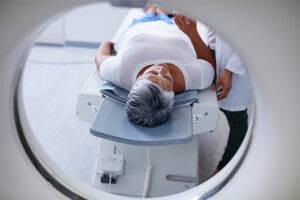Neurology
Migraine
Complementary and Integrative Migraine Treatments
Overview
Complementary and integrative approaches may be particularly helpful for patients with migraine who have unresolved pain. Such approaches include cognitive behavioral therapy, biofeedback-assisted relaxation therapy, and wellness behaviors.
Expert Commentary
David W. Dodick, MD
|
|
“Whether it is working with a nutritionist, a therapist, or an exercise physiologist, taking a team approach to migraine treatment can help to improve a patient’s overall health and well-being and can enhance the positive effects of pharmacologic treatment.”
Although a host of new acute and preventive medications are becoming available to treat patients with acute and chronic migraine, not all individuals will experience a complete elimination of pain. Some patients may be affected by some level of migraine pain nearly every day. For these individuals, complementary and integrative approaches to treatment have been shown to effectively improve the ability to cope and carry out the responsibilities of daily life.
Many patients with migraine could benefit from cognitive behavioral therapy, biofeedback-assisted relaxation therapy, mindfulness, and disease state education. Therapists may help patients improve their coping mechanisms and/or reduce catastrophic thinking, if that is thought to be contributory. In addition, complementary modalities such as extracranial nerve blocks and transcutaneous neurostimulation devices can be used alongside acute or preventive treatments to great effect.
Healthy living and excluding trigger factors are also aspects of migraine management that may complement pharmacotherapy. I find that input from a nutritionist can be beneficial even if there are no obvious dietary triggers; a healthy diet, whether that is a Mediterranean diet, a low–glycemic index diet, or a gluten-free diet, is important if it can reduce the dietary triggers for that patient. While the use of cannabis to alleviate headache is relatively common, there is evidence of tolerance to the effects of cannabis on migraine, so I think that this is something that should be asked about in conjunction with health and triggers. Exercise also has potential benefits in migraine, and there is both new and old evidence to that effect. A personalized exercise plan, with input from an exercise physiologist, may be helpful.
Whether it is working with a nutritionist, a therapist, or an exercise physiologist, taking a team approach to migraine treatment can help to improve a patient’s overall health and well-being and can enhance the positive effects of pharmacologic treatment.
References
Cuttler C, Spradlin A, Cleveland MJ, Craft RM. Short- and long-term effects of cannabis on headache and migraine. J Pain. 2020;21(5-6):722-730. doi:10.1016/j.jpain.2019.11.001
Grazzi L, Toppo C, D’Amico D, et al. Non-pharmacological approaches to headaches: non-invasive neuromodulation, nutraceuticals, and behavioral approaches. Int J Environ Res Public Health. 2021;18(4):1503. doi:10.3390/ijerph18041503
Sharpe L, Dudeney J, de C Williams AC, et al. Psychological therapies for the prevention of migraine in adults. Cochrane Database Syst Rev. 2019;7(7):CD012295. doi:10.1002/14651858.CD012295.pub2
Wells RE, Beuthin J, Granetzke L. Complementary and integrative medicine for episodic migraine: an update of evidence from the last 3 years. Curr Pain Headache Rep. 2019;23(2):10. doi:10.1007/s11916-019-0750-8











